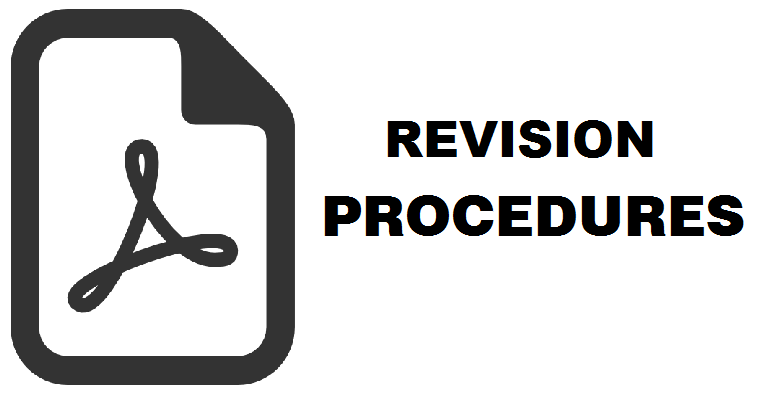Pelayanan bimbingan literasi dan sumber informasi perpustakaan bagi mahasiswa yang sedang menyusun tugas akhir
Anton Risparyanto(1*)
(1) Perpustakaan Universitas Islam Indonesia, Yogyakarta
(*) Corresponding Author
Abstract
Introduction. There are various types of information sources and guidelines on information literacy at libraries. It is necessary to understand the types of information sources and guidelines on information literacy needed by students, particularly for those who are in the stage of writing their final assignments. The aims of this paper is to provide better understanding of the need of information sources for the final year students.
Research Methods. This is qualitative descriptive research with 10 final year students in structured interviews as well as observations from the Indonesian Islamic University.
Data analysis. Data from interviews and observations were analyzed using qualitative methods on the variables used as research subjects.
Results and Discussions. The data showed that types of online and printed information sources include (a) textbooks; (b) journals; (c) proceedings and (d) final assignments (theses and dissertations). In terms of information literacy guidelines, they need some guideline to (a) access to information sources; (b) analyse information sources; (c) evaluate information sources and (d) use information sources.
Conclusions and Recommendations. The library should provide several types of information sources and information literacy guidelines for students to prepare their final assignments. The paper also suggests that the Directorate of Indonesian Islamic University Library to consider better students’ information needs and continue with further similar research.
Keywords
Full Text:
PDFReferences
Arif, I. (2017). Pemanfaatan koleksi perpustakaan fakultas hukum universitas gadjah mada untuk karya akhir mahasiswa: Kajian analisis sitasi. Berkala Ilmu Perpustakaan dan Informasi, 13(2), 155–165. https://doi.org/10.22146/bip.27494
Aziz, L. A., Irhandayaningsih, A., & Kurniawan, A. T. (2015). Upaya perpustakaan dalam mengurangi plagiarisme pada karya ilmiah mahasiswa (Studi kasus di UPT Perpustakaan UNIKA Soegijapranata). Jurnal Ilmu Perpustakaan, 4(3), 1–13.
Carlock, D. M., Arizona, & Perry, A. M. (2008). Exploring faculty experiences with e-books: A focus group. Library Hi Tech, 26(2), 244–254. https://doi.org/10.1108/07378830810880342
Felicia, U. I. (2015). Information needs, library resources and services available to post graduate students in the institute of african studies, University of Ibadan, Nigeria. International Journal of Library and Information Science, 7(4), 77–85. https://doi.org/10.5897/IJLIS2014.0450
Georgas, H. (2013). Google vs. the library: student preferences and perceptions when doing research using google and a federated search tool. Libraries and the Academy, 13(2), 165–185.
Hajam, M. A. (2017). Users’ information literacy competencies: A study with reference to scholarly community of Kashmir University. DESIDOC Journal of Library and Information Technology, 37(3), 153–157. https://doi.org/10.14429/djlit.37.3.9739
Lasa Hs. (2009). Kamus kepustakawanan Indonesia. Yogyakarta: Pustaka Book Publisher.
Malliari, A., & Nitsos, I. (2008). Contribution of an information literacy programme to the education process. Library Management, 29(8/9), 700–710. https://doi.org/10.1108/01435120810917314
Moleong, L. J. (2010). Metodologi penelitian kualitatif (Revisi). Bandung: PT Remaja Rosdakarya.
Moly, T. M. (2014). Information need and information seeking behavior of information science students in Haramaya University, Ethiopia. International Research: Journal of Library & Information Science, 4(2), 244–252.
Nur’aini. (2015). Perbandingan pemanfaatan jurnal tercetak dengan jurnal elektronik untuk kebutuhan informasi mahasiswa di perpustakaan Universitas Sumatera Utara Cabang Kedokteran. Berkala Ilmu Perpustakaan dan Informasi, 11(2), 36–43. https://doi.org/doi.org/10.22146/bip.10034
Perpustakaan Nasional RI. (2015). Peraturan Kepala Perpustakaan Nasional Republik Indonesia Nomor 11 tahun 2015 tentang Petunjuk Teknis Jabatan Fungsional Pustakawan dan Angka Kreditnya. Retrieved March 13, 2018 from http://www.pnri.go.id.
Purwono. (2014). Materi pokok profesi pustakawan; 1-9; PUST4207. Tangerang Selatan: Universitas Terbuka.
Rahma, A. A. (2017). Pemanfaatan jurnal psikologi dalam penyusunan tesis mahasiswa Psikologi UGM tahun 2012 kajian analisis sitiran. Berkala Ilmu Perpustakaan dan Informasi, 13(1), 12–24. https://doi.org/10.22146/bip.16950
Saunders, L., Kurbanoglu, S., Boustany, J., Dogan, G., Becker, P., Blumer, E., … Majid, S. (2015). Information behaviors and information literacy skills of LIS students: An international perspective. Journal of Education for Library and Information Science Online, 56(1), 80–99. https://doi.org/10.12783/issn.2328-2967/56/S1/9
Sengupta, S. S. (2014). E-thesis repositories in the world: A critical analysis. Retrieved October 2018 from https://pqdtopen.proquest.com/doc/1696933497.html?FMT=ABS
Septiyantono, T. (2014). Materi pokok literasi informasi; 1-9; PUST4314. Tangerang Selatan: Universitas Tebuka.
Suciati, U., Nurhayati, & Widayati. (2012). Preferensi pemustaka dalam menyusun tugas akhir (skripsi/tesis/disertasi) menggunakan sumber informasi database online (studi kasus di perpustakaan Fakultas Filsafat UGM. Berkala Ilmu Perpustakaan dan Informasi, 8(2), 25–39. https://doi.org/10.22146/bip.7703
Sugiyono. (2008). Memahami penelitian kualitatif. Bandung: CV.ALFABETA.
Tjiptasari, F., & Ridwan, M. M. (2017). Kebutuhan informasi mahasiswa Fakultas Ilmu Pendidikan Universitas Negeri Yogyakarta. Pustakaloka, 9(1), 57–67. Diakses dari http://jurnal.stainponorogo.ac.id
Undang-Undang Republik Indonesia Nomor 43 tahun 2007 tentang Perpustakaan. (2007). Retrieved March 10, 2018 from http://eprints.dinus.ac.id/14765/
Weiner, S. A., Pelaez, N., Chang, K., & Weiner, J. (2012). Biology and nursing students’ perceptions of a web-based information literacy tutorial. Communications in Information Literacy, 5(2), 187–201.
Article Metrics
Refbacks
- There are currently no refbacks.
Copyright (c) 2019 Berkala Ilmu Perpustakaan dan Informasi

This work is licensed under a Creative Commons Attribution-ShareAlike 4.0 International License.











